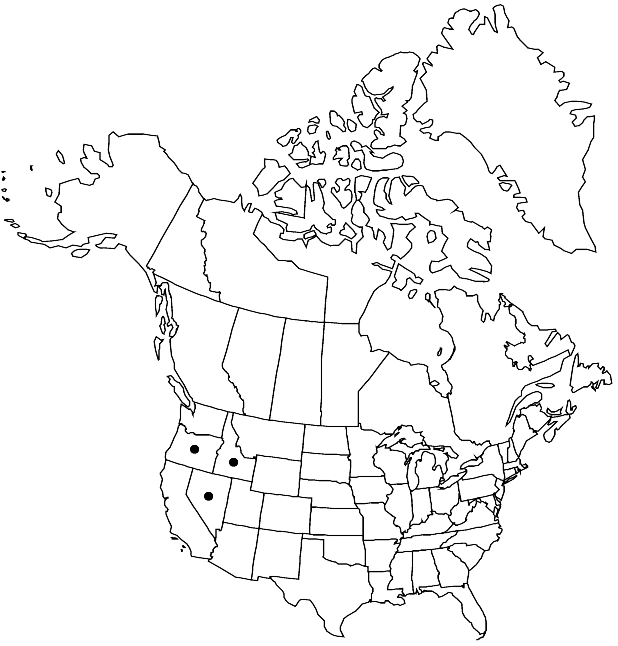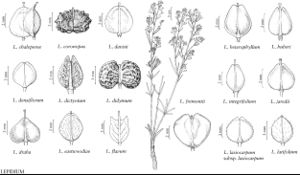Lepidium davisii
Madroño 9: 164. 1948.
Perennials; (cespitose, caudex woody, many-branched, with persistent petiolar remains); puberulent. Stems simple from base, erect, unbranched or branched (few) distally, (0.2–)0.5–1(–1.4) dm. Basal leaves (often deciduous); not rosulate; blade spatulate to oblanceolate, 1–2.5(–3.2) cm × 2–6(–9) mm, margins entire or apically 3(–5)-toothed or -lobed. Cauline leaves sessile; blade usually oblanceolate or oblong, rarely obovate, (0.8–)1.3–2.5 cm × (2–)4–7 mm, base obtuse or cuneate, not auriculate, margins entire or apically 3(–5)-toothed. Racemes slightly elongated in fruit; rachis puberulent, trichomes straight or curved. Fruiting pedicels divaricate-ascending, straight, (slender or slightly stout, terete), (2.5–)3–4.2(–5) × 0.4–0.5mm, usually puberulent throughout, rarely glabrate. Flowers: sepals suborbicular to oblong-ovate, 1.2–2 × 1–1.5 mm; petals white, obovate, 2–3.2(–4) × 1.5–2 mm, claw 0.5–1 mm; stamens 6; filaments 1.7–2.3 mm, (glabrous); anthers 0.4–0.7 mm. Fruits suborbicular to broadly ovate, (2.5–)3–4.3(–5) × (2–)2.3–4 mm, apically winged, apical notch 0.1–0.4 mm deep; valves thin, smooth, not veined, glabrous or sparsely puberulent; style 0.5–1 mm, exserted beyond apical notch. Seeds oblong-ovate, (1.8–)2–2.3 × 1–1.2 mm. 2n = 32.
Phenology: Flowering May–Jun.
Habitat: Playas of sagebrush plains and mesa, vernal ponds
Elevation: 800-1600 m
Distribution

Idaho, Nev., Oreg.
Discussion
Lepidium davisii is restricted to six counties in Idaho (Ada, Elmore, Owyhee, Twin Falls), Nevada (Elko), and Oregon (Malheur).
Selected References
None.
